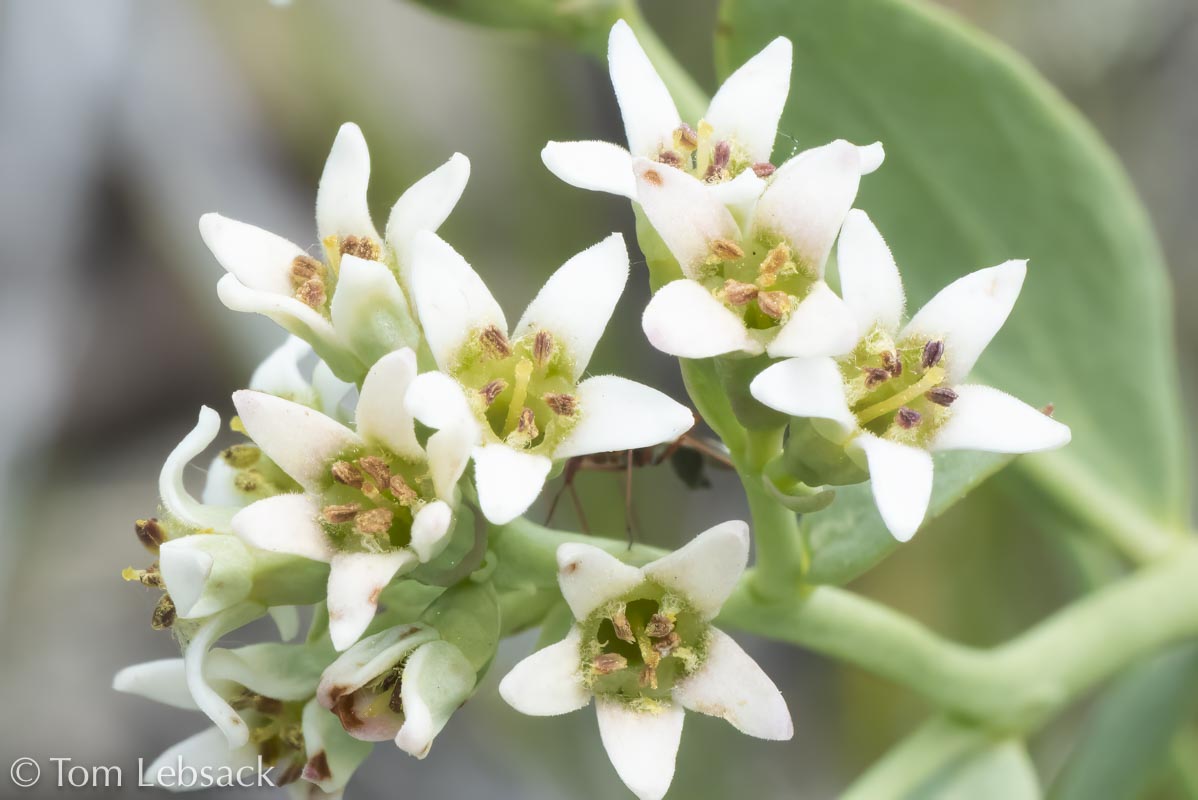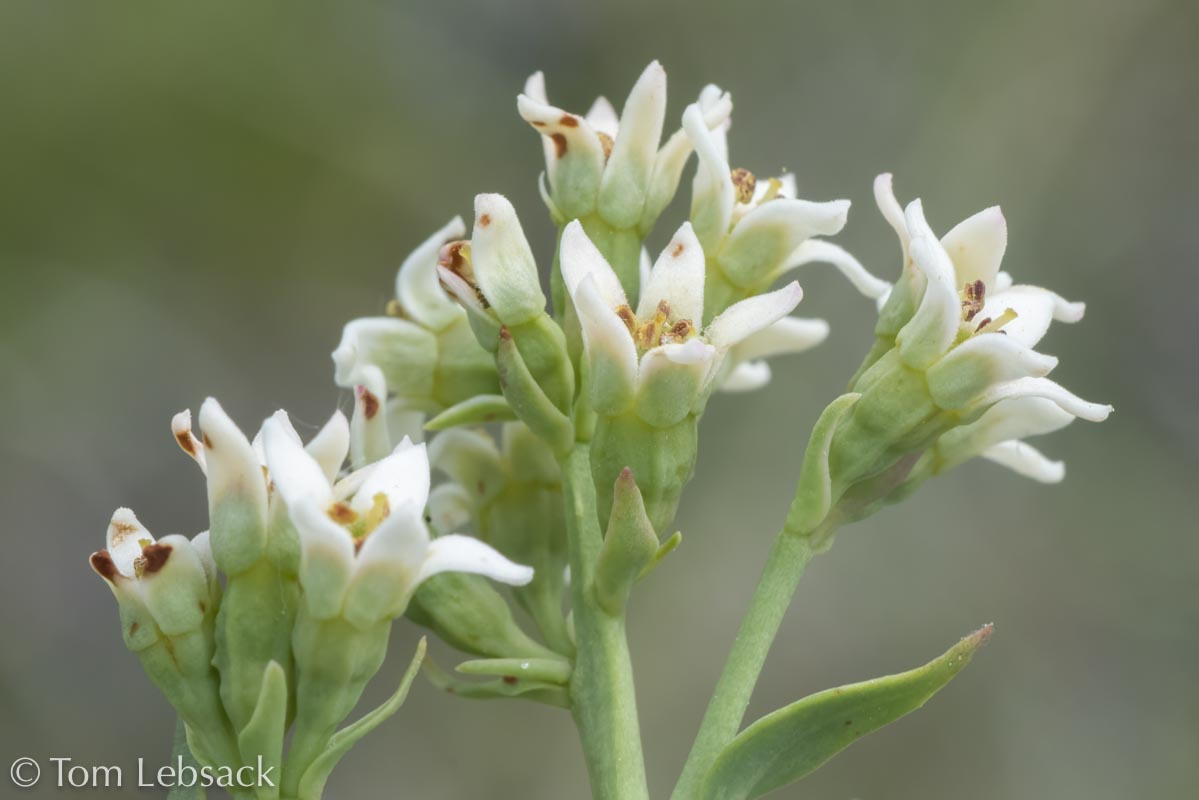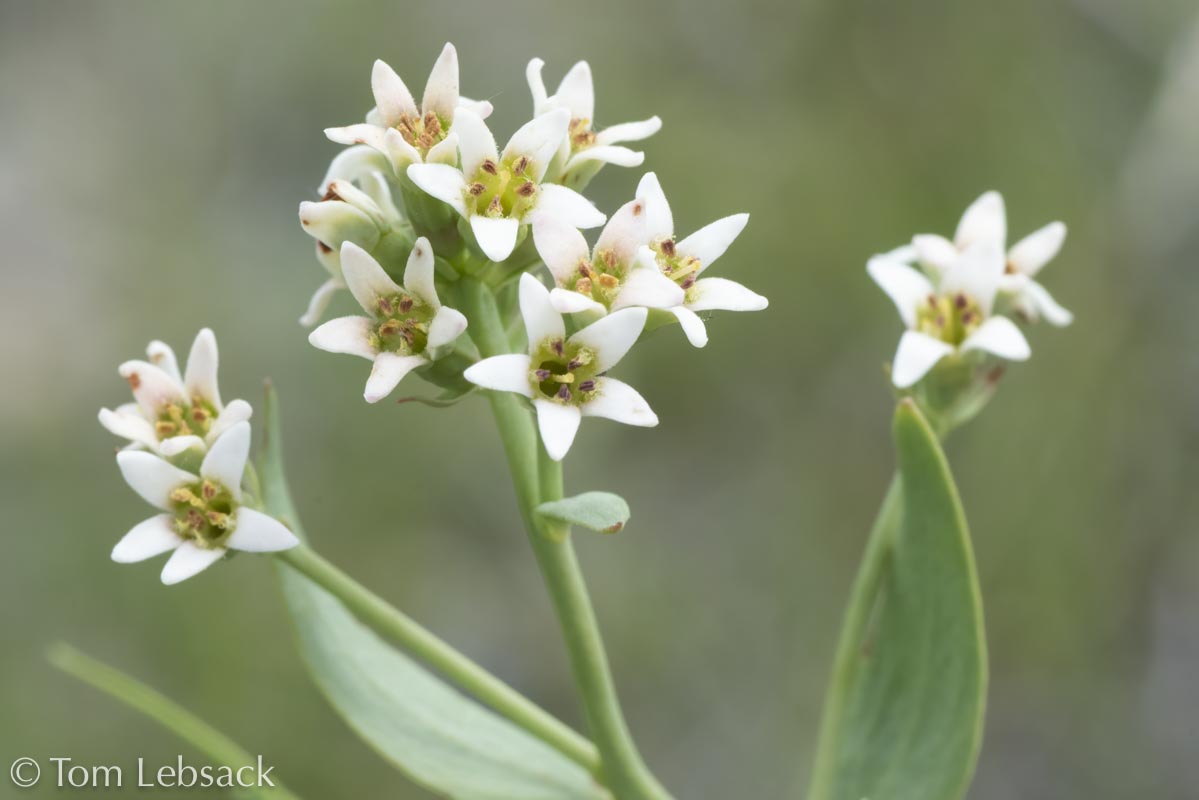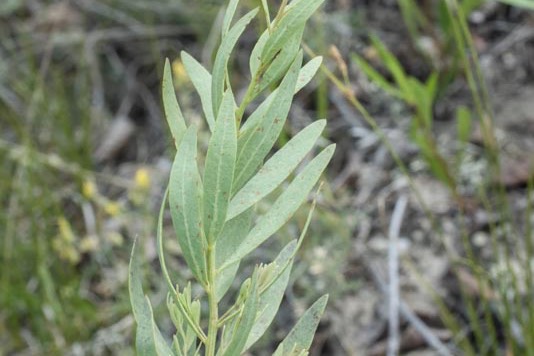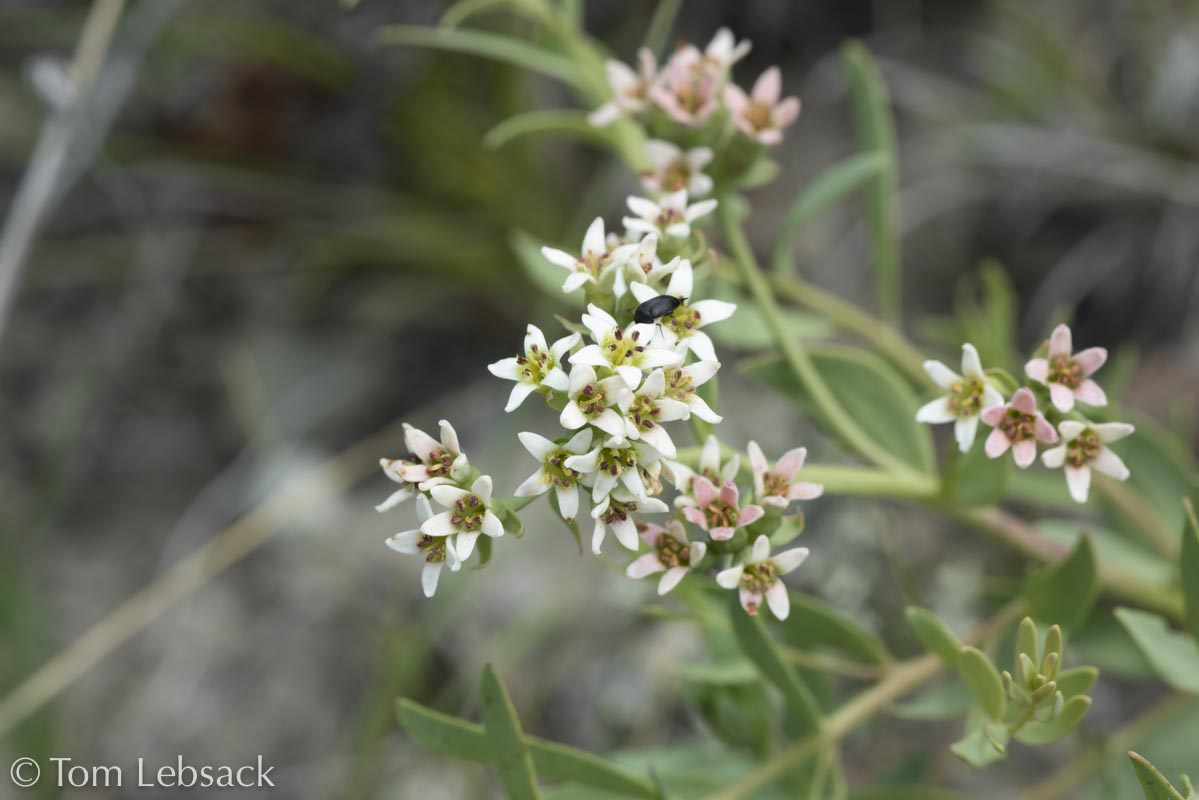Comandra umbellata ssp. pallida
(Pale Bastard Toadflax)
| Scientific Name | Comandra umbellata ssp. pallida | USDA PLANTS Symbol | COUMP |
| Common Name | Pale Bastard Toadflax | ITIS Taxonomic Serial No. | 523879 |
| Family | Santalaceae (Sandalwood) | SEINet Reference |
Click Here |
| Description |
Life zones and habitat: Plains to subalpine (3500 to 11,000 ft.); dry soils in open areas, sandy and rocky slopes, among sagebrush, conifer and deciduous forests. Plant: Leafy perennial from rhizomes, often much branched, 3 to 20 inches tall. Leaves: Alternate, thick grayish-green leaves with linear, lanceolate or narrowly ovate blades, 1/3 to 2 inches long; leaf tip attenuate to acute, often mucronulate or apiculate; lateral veins are obscure. Inflorescence: Clusters of 3 to 6-flowered cymes, each with a leaf-like bract below; small white, greenish-white to pink flowers with funnel-shaped corollas having (usually) 5 lobes; about 1/4-inch across or less. Bloom Period: May to July. References: "Flora of Colorado" by Jennifer Ackerfield, Flora of North America and SEINet |
BONAP Distribution Map Map Color Key |
Colorado Status: Native |
© Tom Lebsack 2025
Banner photo: Castilleja rhexifolia and a brewing storm over the San Juan Mountains
I try to provide accurate, up-to-date, and relevant information, but cannot guarantee the completeness or accuracy of any information presented on this website. I use authoritative references to insure high standards of accuracy and review and update the information frequently.
